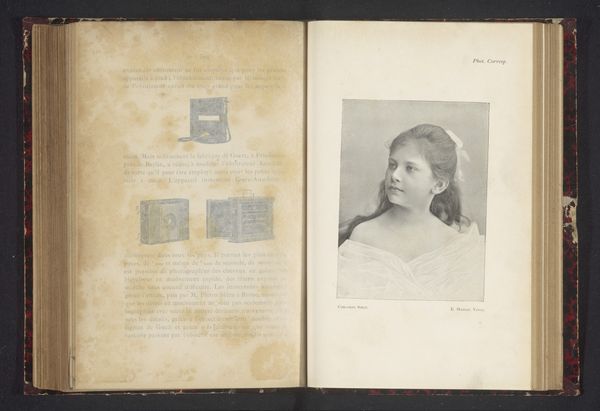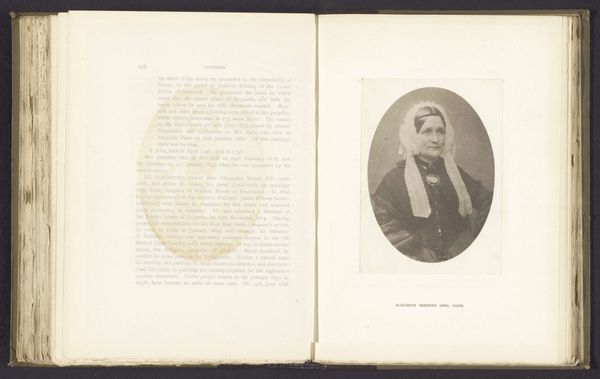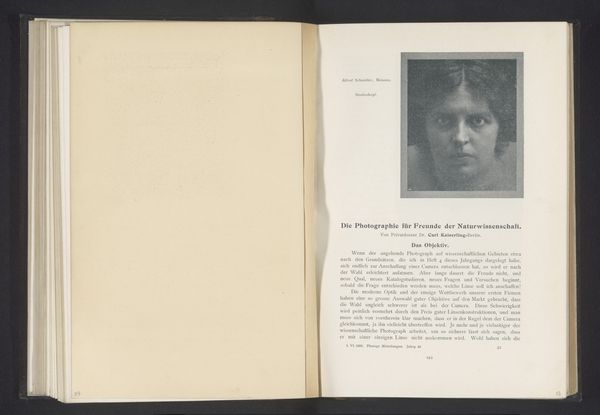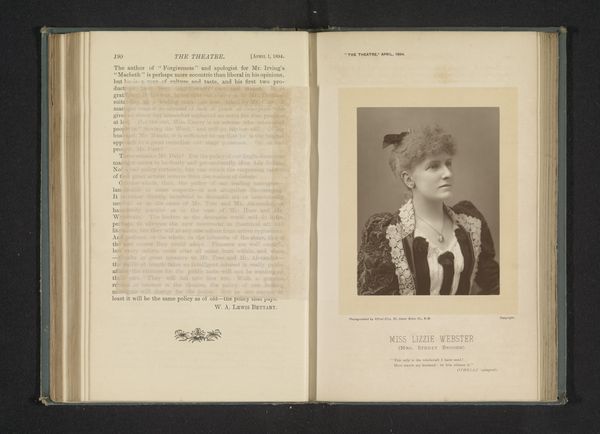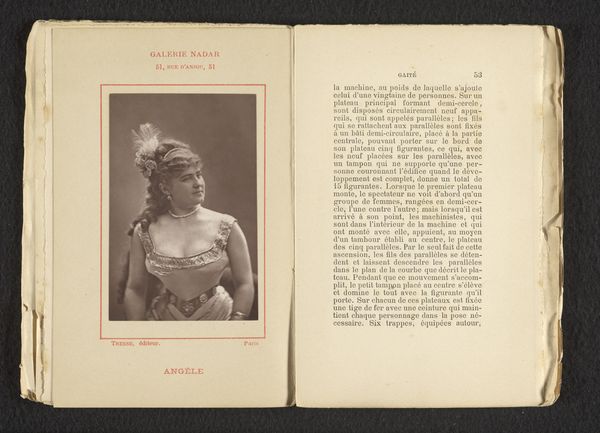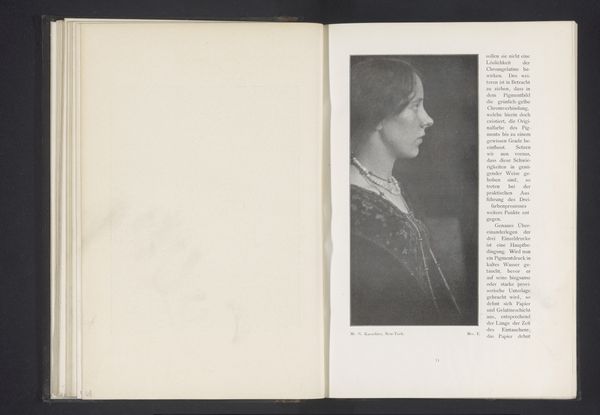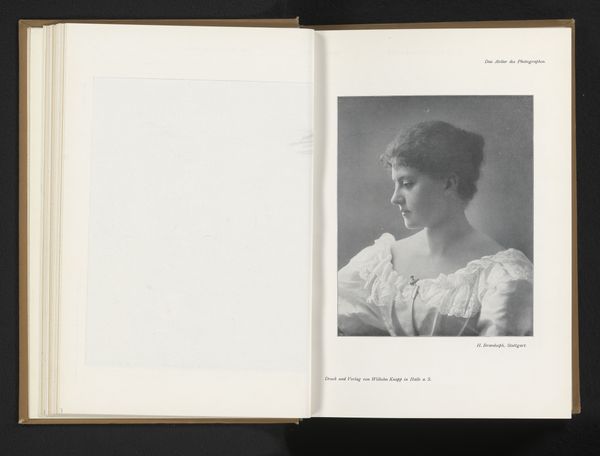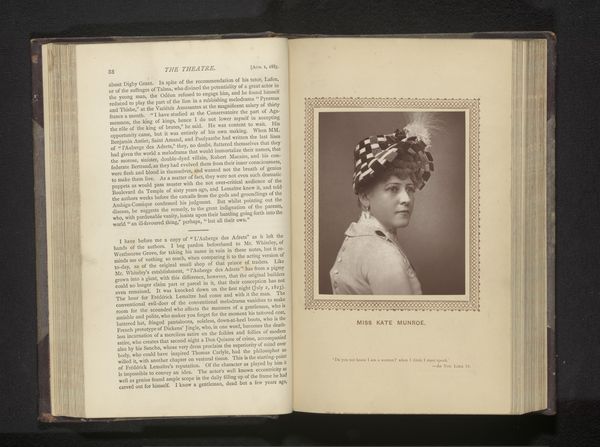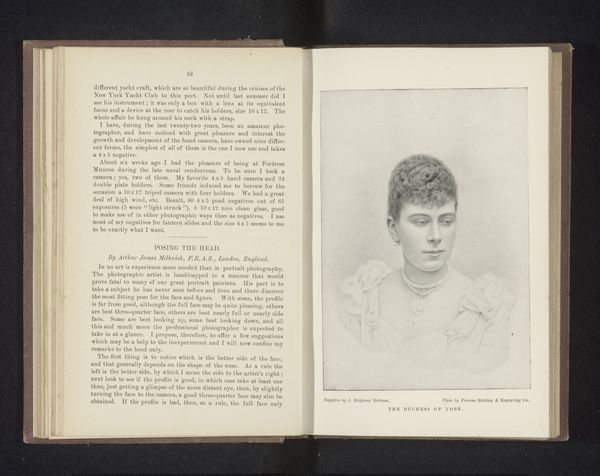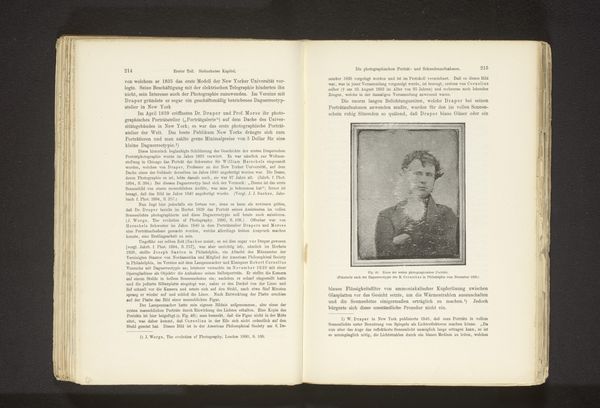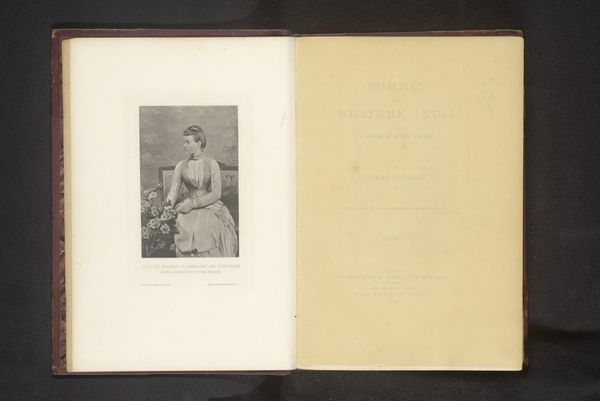
photography, gelatin-silver-print
#
portrait
#
aged paper
#
homemade paper
#
paper non-digital material
#
paperlike
#
paper texture
#
photography
#
folded paper
#
gelatin-silver-print
#
thick font
#
letter paper
#
paper medium
#
historical font
Dimensions: height 124 mm, width 78 mm
Copyright: Rijks Museum: Open Domain
Curator: Let’s turn our attention to "Portret van een onbekende vrouw," or Portrait of an Unknown Woman, a gelatin silver print created sometime before 1891 by the K.K. Lehr- und Versuchsanstalt für Photographie. Editor: My first thought is quietude. She appears dignified, though there’s a tinge of melancholy in her gaze, and something compelling about this anonymous person staring back at us through time. Curator: The photograph's format itself is part of its meaning. This would have been part of a book showcasing exemplary photographs, acting as an advertisement for the Viennese photographic institute responsible. The institution’s name printed below almost acts as a maker's mark. Editor: Right, seeing it like this within the opened book, does contextualize the image as more of a commercial object. Does the subject's anonymity reinforce the focus on the institute’s artistry rather than the sitter herself? This reinforces, perhaps unintentionally, a very specific and gendered power dynamic of the era. Curator: Precisely. The lack of a named subject shifts the emphasis onto the artistic and technical skill of the photographers at the institute, but I also feel like there is a certain intimacy in the photo. She appears contemplative. Note how the background curtain is slightly blurred which throws the attention to her eyes and the simple necklace accentuating her delicate neck. Editor: I agree about that feeling of intimacy but this only seems to intensify the missing context of her life. Thinking about photographic portraiture from the late 19th century makes me reflect on visibility, the societal restrictions on women and what this image represents in terms of freedom and autonomy for women in general. Curator: Indeed. There are several layers to peel back from this image. The power dynamics and its composition seem very typical for this era in central Europe, while still leaving space to imagine what could have been going on in her mind while posing. Editor: It reminds us that even images framed within power structures can hold a haunting beauty. It is hard not to want to know more about her. Curator: Yes, art invites us to reflect and dream, even about the anonymous ones from the past.
Comments
No comments
Be the first to comment and join the conversation on the ultimate creative platform.
